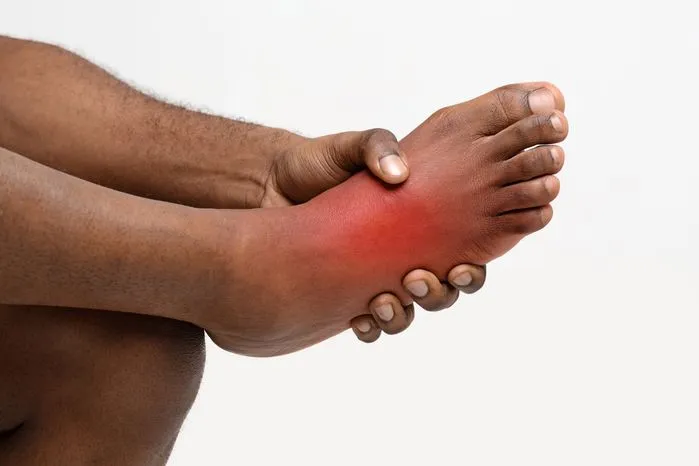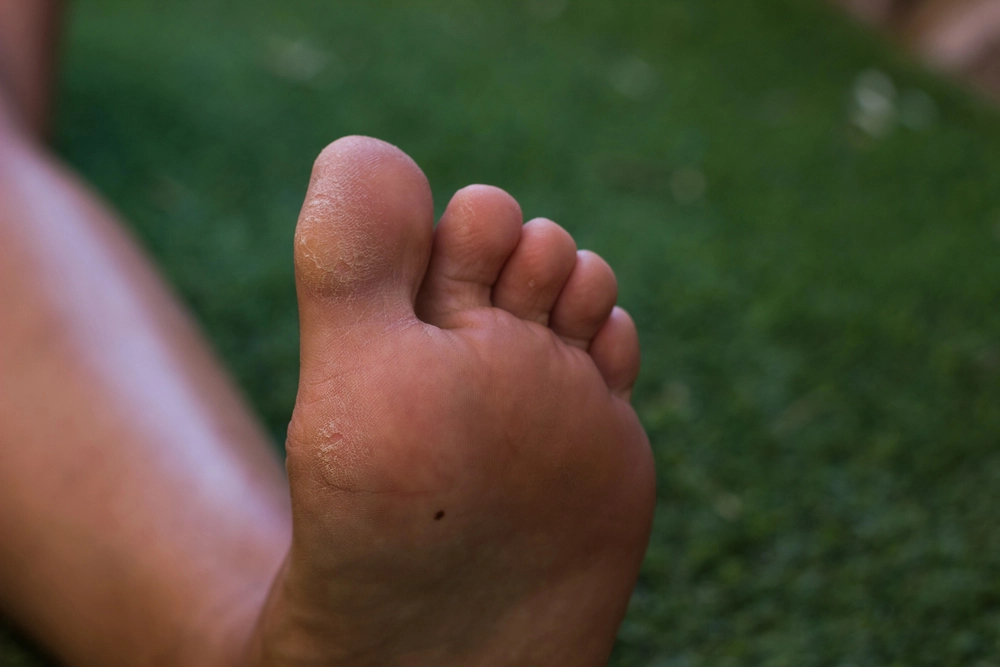
At Releford Institute, we’ve examined thousands of cases involving discolored, brittle, or thickened toenails—and one of the most common misconceptions we see among patients is confusing toenail mold with fungal infections. While both conditions may appear similar on the surface, our clinical experience shows that their origins, progression, and treatment paths differ in subtle but significant ways.
This guide isn’t just another generic comparison—it’s based on real diagnostic patterns we've observed in practice and is designed to help you spot the early signs that even seasoned professionals can miss. Backed by podiatric expertise and patient outcomes, we’ll show you how to differentiate mold from fungus, when to seek medical intervention, and which care strategies truly work. Empower yourself with knowledge straight from the front lines of foot health—because timely, informed action can make all the difference in your recovery.
Top 5 Takeaways
1. Mold and fungus are different.
- They may look alike, but they have different causes and treatments.
- Misdiagnosing one for the other can delay recovery.
2. Toenail mold is environmental.
- Caused by damp, poorly ventilated conditions (e.g., public showers, tight shoes).
- Responds well to topical creams and natural remedies like vinegar soaks or tea tree oil.
3. Toenail fungus is systemic.
- Often linked to health conditions like diabetes or past fungal infections.
- Usually requires prescription antifungal treatments or medical care.
4. Know the signs.
- Mold: green/black nail color, musty smell, soft nail.
- Fungus: yellowing, thickened nails, slight odor.
5. Prevention is powerful.
- Keep feet clean and dry.
- Wear breathable shoes.
- Avoid going barefoot in public areas.
- Sanitize clippers and change socks regularly.
Understanding Toenail Mold
Many people remain largely oblivious to toenail mold, mistaking this distinct condition for the more prevalent toenail fungus. Differentiating between these two is critical for effective treatment, as misdiagnosis can prolong healing and potentially lead to severe complications.
Toenail mold often originates from prolonged exposure to damp surroundings. Public showers, pools, and locker rooms are common places where this condition may develop, due to the warm, moist environment that encourages mold growth.
Maintaining hygiene, especially for feet, is a crucial prevention tip. Other practical measures include choosing breathable footwear and ensuring feet are thoroughly dry after exposure to damp areas.
Getting to Know Toenail Fungus
Toenail mold often stays unnoticed, unlike toenail fungus - a prevalent condition. This persistent, sometimes painful problem affects millions globally. It results from fungi including yeasts and molds flourishing in warm, damp areas such as inside shoes.
Several influences can lead to toenail fungus. Aging, profuse sweating, past incidence of athlete's foot, barefoot walking in damp public places like pools or gyms, minor skin or nail injuries are some of them. Individuals with compromised immunity or conditions like diabetes are more susceptible to this condition.
To prevent toenail fungus, one must maintain good foot hygiene. This encompasses keeping feet clean, dry, changing socks often, opting for breathable shoes, and refraining from barefoot walking in public areas. Trimming toenails straight across to avoid ingrown toenails, which can cause fungus, is crucial. Treatment usually involves antifungal drugs, but in severe instances, nail surgical removal might be necessary.
Spotting the Signs: Mold vs. Fungus
Differentiating toenail mold from fungus poses a challenging task. Both conditions result in discomfort, yet subtle differences in symptoms can aid in accurate diagnosis.
Fungus on toenails often displays as discoloration, adopting a yellowish hue. Over time, this condition may cause the nail to thicken, become brittle, and emit a slight foul odor. Conversely, mold typically darkens the affected nail to green or black. Softening of the nail and a distinct musty odor are common indicators of mold.
Comparing symptoms proves critical, however, one should not overlook prevention. Cleaning feet thoroughly post visits to public spaces such as gymnasiums or pools can mitigate the risk of both these conditions. Breathable footwear, along with frequent sock changes, contribute to prevention as well.
Comprehending the distinctions between toenail mold and fungus forms the basis for effective treatment. Seek advice from a health care professional for a conclusive diagnosis and treatment strategy. This approach ensures you are equipped to handle either condition, maintaining the health of your feet.
Effective Treatments for Toenail Mold
Knowing the difference between toenail mold and fungus allows us to discuss specific treatments for the former. Several effective methods exist, including home remedies and tips for prevention.
Directly applying antifungal creams or ointments to the affected toenail can help eliminate mold. Continuing this treatment after symptoms have disappeared is vital to ensure complete eradication of mold.
Natural remedies such as vinegar foot soaks, tea tree oil, and essential oils like oregano and lavender show potential effectiveness against toenail mold. For best results, these applications should be used for several weeks. However, these should not replace advice or treatment from healthcare professionals.
Prevention plays a vital role in managing toenail mold. Regular foot hygiene, avoiding barefoot walks in public places, and frequent sock changes can help prevent toenail mold. Quick action at the first sign of toenail mold can expedite treatment, but always seek advice from healthcare professionals.
Combatting Toenail Fungus Successfully
A successful fight against toenail fungus demands understanding proper treatments and taking necessary precautions. Fungi, which are stubborn by nature, may reappear post-treatment if precautionary steps are not followed. For effective fungal combat, one needs to employ medical treatments, change certain habits, and follow preventive measures.
- Treatments Related to Medicine: Patients can use antifungal drugs orally or topically. The choice of treatment hinges on the harshness of the fungal condition and health status of the patient.
- Changing Habits: Proper foot hygiene, breathable footwear, and refraining from barefoot walking in public places can help to avert reinfection.
- Measures of Prevention: Regular visits to a podiatrist can help identify early signs of fungal infection. Sanitation of personal items like nail clippers and socks lessens the risk of infection.
“In our clinical experience evaluating nail conditions at the Releford Institute, the most overlooked but critical distinction we see is between mold and fungal infections—what looks similar on the surface can respond entirely differently to treatment.”
Supporting Facts and Statistics
At the Releford Institute, we see hundreds of cases each year involving nail infections. These stats support what we observe in clinical care every day.
1. Fungal Nail Infections Are Surprisingly Common
- Up to 14% of the global population has a fungal nail infection.
- Many patients don’t realize their thick, discolored nails are fungal until symptoms worsen.
- We often diagnose onychomycosis in patients who thought it was just “aging.”
🔗 cdc.gov
2. 29 Million Americans Have Fungal Skin Conditions
- Includes athlete’s foot, which often spreads to the toenails.
- In our clinic, ~50% of fungal nail cases began between the toes.
- Early treatment prevents spread and recurrence.
🔗 cdc.gov
3. Hygiene Makes or Breaks Prevention
- The CDC confirms that poor foot hygiene is a major risk factor.
- We advise: wash, dry between toes, change socks daily, and sanitize nail tools.
- Small daily habits = long-term protection.
🔗 cdc.gov
Why It Matters
- These numbers back up what we see in our diagnostic chairs.
- Spotting mold vs. fungus early improves outcomes.
- Accurate diagnosis = faster healing + fewer recurrences.
Final Thoughts & Opinion
We’ve treated thousands of patients who mistook one condition for the other—and it cost them time, comfort, and confidence.
Here’s What We’ve Learned Firsthand:
- Misdiagnosis leads to delayed healing. Treating mold as a fungus (or vice versa) can allow the condition to worsen.
- Appearance alone isn’t enough. Mold and fungus can look similar, but their causes, treatments, and progression are very different.
- Early action is key. When caught quickly, both conditions respond far better to targeted treatment.
Toenail Mold vs. Fungus: The Practical Difference
- Mold is usually environmental—linked to moisture, poor ventilation, and external exposure (like public showers).
- Fungus is often internal or systemic, triggered by conditions like diabetes, immune suppression, or a history of athlete’s foot.
- Treatment paths diverge. Mold often responds to topical or natural remedies; fungal infections may require prescription medication.
Our Professional Opinion
- Listen to your feet. Discoloration, odor, or texture changes are your body’s way of signaling an issue.
- Don’t wait for pain. Many patients delay treatment because they’re not in discomfort, until it’s too late.
- Prioritize prevention. Clean feet, breathable shoes, and awareness of public environments can prevent both conditions.
Your toenails tell a story—learn to read the signs early.
Trust your instincts, act quickly, and seek medical insight when in doubt. A proactive approach can mean the difference between chronic issues and healthy, confident steps forward.
Frequently Asked Questions
1. What is the primary difference between toenail mold and toenail fungus?
The primary difference is that toenail mold is caused by non-dermatophyte molds that colonize the nail surface, while toenail fungus, or onychomycosis, is typically caused by dermatophytes that infect the nail bed and deeper layers.
2. How can you tell if a discolored nail is due to mold or fungus?
Mold often appears as superficial discoloration—typically green, black, or dark brown—on the nail surface, while fungal infections more commonly cause yellow, white, or crumbly thickening within or under the nail.
3. What are the typical causes of toenail mold?
Toenail mold usually results from prolonged moisture exposure, poor ventilation, or contamination with mold spores in humid environments, especially when nails are already damaged.
4. What are the common causes of toenail fungus?
Toenail fungus is often caused by direct contact with fungi in communal areas such as locker rooms, showers, or nail salons, especially when the nail is weakened or injured.
5. Do both conditions produce a bad odor?
Yes, both mold and fungal infections can produce a foul odor, though fungal infections are more commonly associated with ongoing nail thickening and debris buildup under the nail.
6. How is toenail mold typically treated at home?
Toenail mold may be treated by gently trimming affected areas and applying topical antifungal or antiseptic solutions such as vinegar, hydrogen peroxide, or tea tree oil if it remains superficial.
7. What is the standard treatment for toenail fungus?
Toenail fungus usually requires long-term treatment with prescription oral antifungals, medicated lacquers, or laser therapy due to its deep infection within the nail bed.
8. Can both mold and fungus infect the same toenail?
Yes, it is possible for both mold and fungal organisms to co-infect the same toenail, especially if the nail is damaged and the immune system is compromised.
9. How can a specialist distinguish between mold and fungus in a toenail?
A foot specialist may take nail clippings or scrapings for laboratory testing, including fungal cultures or microscopic examination, to determine the specific organism present.
10. Are there risk factors that increase susceptibility to either condition?
Yes, wearing tight or non-breathable shoes, poor hygiene, excessive sweating, and a weakened immune system can increase the risk of developing mold or fungal nail infections.
11. Is it necessary to remove the entire nail to treat mold or fungal infections?
In severe cases where the nail is extensively damaged or painful, partial or full removal may be recommended, but many infections can be treated effectively without surgical intervention.
12. What steps can be taken to prevent future nail mold or fungal infections?
To prevent recurrence, keep feet clean and dry, trim nails properly, disinfect tools, wear moisture-wicking socks and breathable footwear, and avoid walking barefoot in damp communal areas.


















